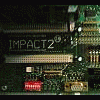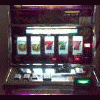Is there a comprehensive list of supported / non supported games in MFME anywhere?
At this point it's probably far quicker to list the ones that don't run.
Specifically I was wondering about "What a carry on" and "Cash Raid" on what I believe is spACE tech.
And "Around the world in 80 days" AWP on JPM System 5.





 Find content
Find content Not Telling
Not Telling








